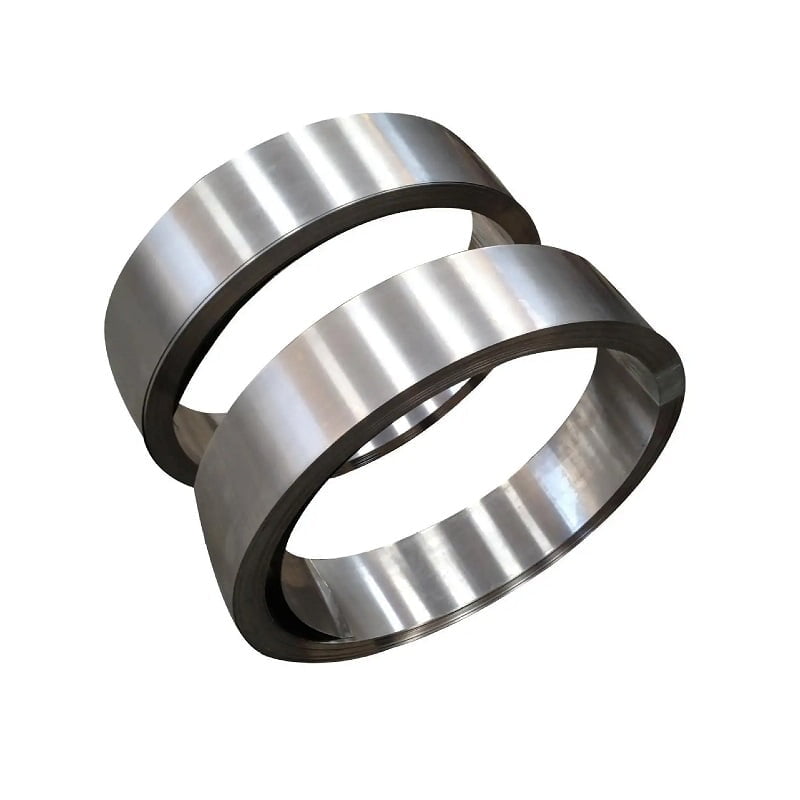
Nimonic i Inconel są bardzo cenionymi nadprawami niklu powszechnie wykorzystywanymi w różnych branżach ze względu na ich wyjątkowe cechy wydajności. Kluczowe aspekty tych stopów obejmują:
- Kompozycja: Oba stopy składają się przede wszystkim z niklu, ale różnią się one ilości chromu, molibdenu i innych elementów, wpływając na ich wydajność.
- Właściwości mechaniczne: Wykazują wysoką siłę i dobrą plastyczność, ale ich specyficzne właściwości różnią się, wpływając na ich przydatność do różnych zastosowań.
- Odporność na korozję i utlenianie: Oba stopy wyróżniają się w odporności na korozję i utlenianie, ale Inconel jest szczególnie znany ze swojej wszechstronności w agresywnych środowiskach.
- Aplikacje: Nimonic jest często stosowany w zastosowaniach lotniczych, podczas gdy Inconel znajduje obszerne zastosowanie w środowiskach chemicznych i środowiskach morskich.
- Wykonanie i wykonalność: Urabialność tych stopów jest różna, przy czym nie sprawy jest ogólnie łatwiejsze do przetworzenia.
Kompozycja
| Stop | Nikiel (Ni) | Chrom (Cr) | żelazo (Fe) | Molibden (Mo) | Cobalt (Co) | Tytan (Ti) | Aluminium (Al) |
|---|---|---|---|---|---|---|---|
| Nimonic | 63-70% | 15-20% | Bal. | 1-3% | 8-11% | 3-4% | 0.2-0,5% |
| INCONEL | 58-72% | 14-22% | Bal. | 2-10% | 3-8% | <1% | 0.2-1% |
Właściwości mechaniczne
| Nieruchomość | NIMONIK 80A | Inconel 625 |
|---|---|---|
| Gęstość | 8,4 g/cm³ | 8,44 g/cm³ |
| Wytrzymałość na rozciąganie (temperatura pokojowa) | ~1000 MPa | ~ 827 MPA |
| Granica plastyczności (temperatura pokojowa) | ~ 800 MPa | ~ 690 MPa |
| Zakres temperatury roboczej | Do 1000°C | Do 1000°C |
| Wydłużenie (przy zerwaniu) | 30% | 48% |
Odporność na korozję i utlenianie
| Stop | Opis |
|---|---|
| Nimonic | Najwyższa odporność na utlenianie w wysokich temperaturach, idealna do składników turbiny w lotniczej. |
| INCONEL | Doskonała odporność na korozję w szerokim zakresie środowisk reaktywnych, dzięki czemu nadaje się do agresywnych chemicznych branż przetwarzania. |
Aplikacje
| Przemysł | Zastosowania nimoniczne | Zastosowania Inconel |
|---|---|---|
| Przemysł lotniczy | Ostrza turbiny, komory spalania | Układy wydechowe, komponenty konstrukcyjne |
| Wytwarzanie energii | Turbiny gazowe, wymienniki ciepła | Rurki generatora pary, elementy reaktora jądrowego |
| Ropa i Gaz | Rurki w dół, elementy rafinerii | Maszyny do produkcji ropy i gazu, rurociągi |
| Przetwarzanie chemiczne | Reaktory, wymienniki ciepła | Sprzęt do przetwarzania chemicznego, zawory i wyposażenie |
| Zastosowania morskie | Nie jest powszechnie używany | Offshore Raits, zastosowania morskie |
Wykonanie i wykonalność
| Stop | Techniki wytwarzania | Urabialność |
|---|---|---|
| Nimonic | Spawanie, obróbka, odlewanie | Umiarkowany - może być trudny dla maszyny z powodu wysokiej wytrzymałości. |
| INCONEL | Spawanie, obróbka, formalność | Dobry - oferuje doskonałe charakterystykę spawania i można je łatwo uformować. |
Zalety
| Stop | Zalety |
|---|---|
| Nimonic | -Doskonała siła w wysokiej temperaturze |
| - doskonała odporność na utlenianie | |
| -Zaprojektowany do zastosowań o wysokiej stresu | |
| INCONEL | - Doskonała odporność na korozję w środowiskach reaktywnych |
| - Dobre właściwości mechaniczne w szerokim zakresie temperatur | |
| - Wszechstronne zastosowania w różnych branżach |
Różnice
| Funkcja | Nimonic | INCONEL |
|---|---|---|
| Podstawowe skupienie | Zastosowania w wysokiej temperaturze, szczególnie w turbinach lotniczych i gazowych. | Odporność na korozję w różnych branżach. |
| Zmienność składu | Wyższy kobalt i tytan dla lepszej wytrzymałości w wysokiej temperaturze. | Szerszy zakres gatunków zaprojektowanych dla różnych aplikacji. |
| Urabialność | Trudniejszy do maszyny z powodu wyższej wytrzymałości. | Zasadniczo łatwiejsze do wytwarzania i spawania. |
Ta analiza porównawcza zawiera wyraźny przegląd rozróżnień i podobieństw między Nimonic i Inconel, pomagając określić, który stop może być bardziej odpowiedni dla określonych zastosowań inżynierskich.
